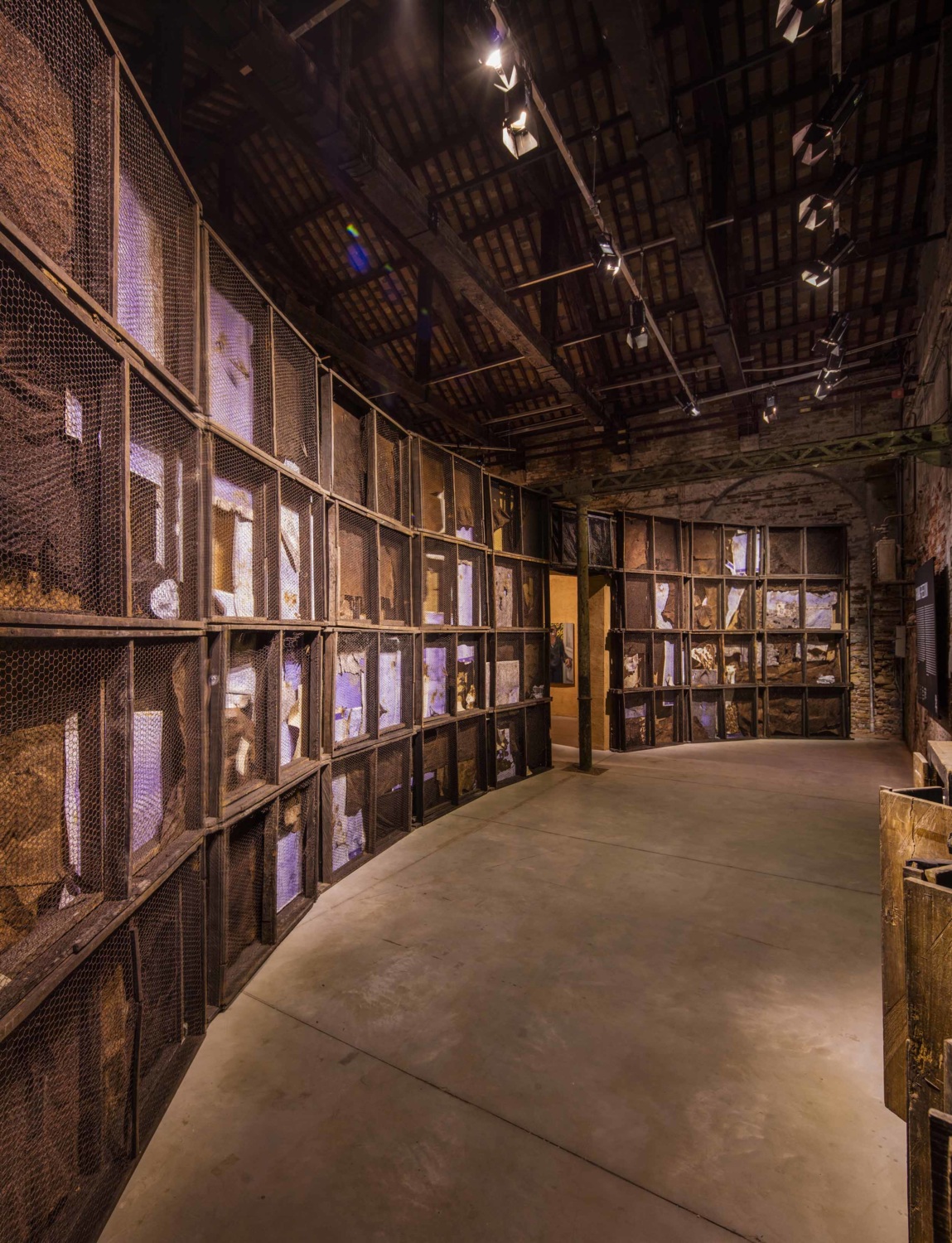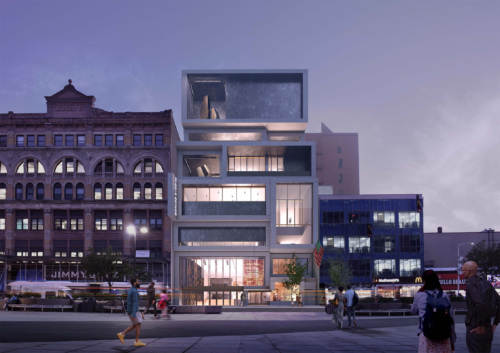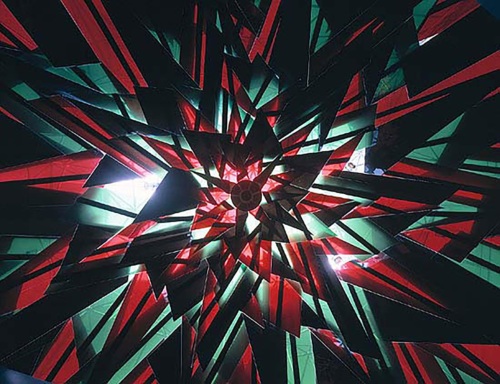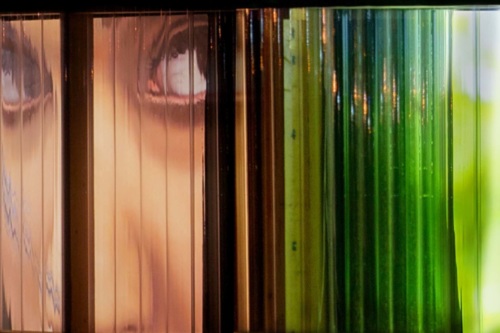
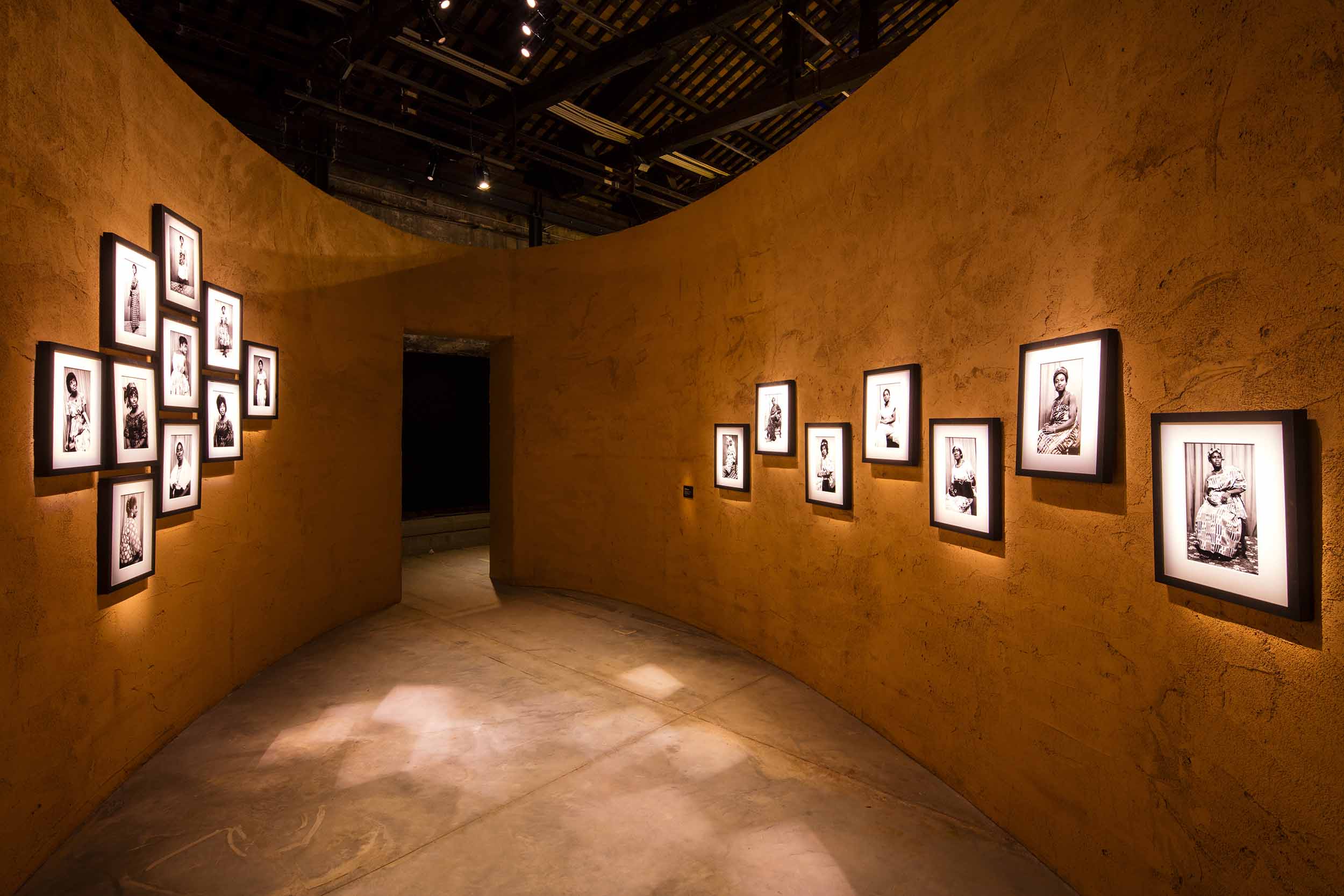
Ghana Freedom Pavilion
Venice, Italy
- Status
2019 - Category
Exhibitions and Installations - Client
Ghana Ministry of Tourism, Arts and Culture - Curator
Nana Ofosuaa Oforiatta Ayim - Exhibition Design
Adjaye Associates - Collaborators
El Anatsui, Ibrahim Maham, Felicia Abban, Lynette Yiadom-Boakye, John Akomfrah, Selasi Awusi Sosu - Institution
La Biennale di Venezia
Technical Info +
Being able to show the diversity and creativity of Ghana on an international scale is an incredible achievement, and one which showcases the talent that we have to offer. - David Adjaye
The first Ghana Pavilion at the 58th International Art Exhibition of La Biennale di Venezia, under the patronage of Ghana’s President Nana Addo Dankwa Akufo-Addo, opened to the public on Saturday 11 May 2019.
Entitled “Ghana Freedom,” after the song composed by E.T. Mensah on the eve of the independence of the new nation in 1957, the pavilion examines the legacies and trajectories of that freedom by six artists, across three generations. Rooted both in Ghanaian culture and its diasporas, the pavilion exhibition included large-scale installations by El Anatsui and Ibrahim Mahama; representation and portraiture by prominent photographer Felicia Abban and painter Lynette Yiadom-Boakye; and a three-channel film projection by John Akomfrah and a video sculpture by Selasi Awusi Sosu.
As the first sub-Saharan country to gain its independence from colonial rule, Ghana became a touchstone for many others from the continent and its diasporas. And yet, what did this freedom mean? The country’s boundaries like so many others had been drawn by colonial hands, and its new freedom was predicated on the denigration of the cultural and spiritual foundations of the groups that now made up Ghana. The ensuing years saw a struggle to reshape, not just our political, but also our cultural, social, and economic realities.
This struggle, or growth, both in the country from either side of the political line, and from those that had gone abroad, led to a flourishing of expression in philosophy, technology, architecture, fashion, music, literature and art. This flourishing, along with a political climate and leadership that supports its resonance, led to this moment. With the mastery of multiple registers, the exhibition interrogates what it is to exist through this collective imaginary known as Ghana.
Situated in the Artiglierie of the historic Arsenale and designed by Sir David Adjaye, Ghana’s seminal Venice Biennale pavilion was a bold statement piece, a reflection of West African heritage and culture, illustrating the elliptical forms favoured by the many communities within the Diaspora. Historically, these typical dwellings are covered with intricate ornamentation, painted with coloured mud and chalk to tell an expressive story, which continues to inspire contemporary 21st century art and design. Inside the Ghana Freedom Pavilion, each artist exhibited in elliptically shaped interconnected spaces, symbolic of these classical earth house structures, plastered with locally-sourced earth.
